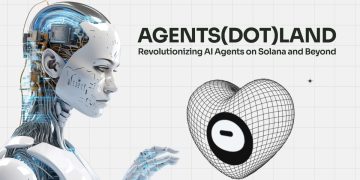A digital asset ecosystem is known as a concept that explains everything related to the crypto sector. This term encompasses the entirety of the offered services as well as the elements linked with cryptocurrencies. An ecosystem of digital assets is a place having incorporated everything present within the space of cryptocurrency. It takes account of a vast series of crypto tokens, futures, services and products, stablecoins, non-fungible tokens (NFTs), and a huge series of crypto tokens.
What a Digital Asset Ecosystem Is in Real Sense?
The world of digital assets has gone through a swift expansion throughout a previous couple of years, elevating its functionality and value. Beyond the price upsurge of the well-known cryptocurrencies, exclusive applications are being powered on the behalf of the digital assets due to which the value transfer has gone beyond only payments. Since the earliest entry of Bitcoin into the market in 2009, the space of digital currency is spreading into the rest of the markets additionally.
Several sectors are going through substantial growth taking into account art (in the NFT form), finance (while comprising the central bank digital currencies (CBDCs), gambling, healthcare, gaming, real estate, and insurance. Essentially, the ecosystem of digital assets is considered to be a basket containing diverse classes to which the underlying technology called “blockchain” secures. These take into account cryptocurrencies, security-backed and asset-backed tokens, CBDCs, stablecoins, and NFTs.
With the support provided on the behalf of an ecosystem of digital assets, conventional assets can be digitally accessible and available to the investors, in this way minimizing the expenditures linked to them. With the very system taking into account diverse protocols, expert investors can avail the chance of obtaining exposure to diverse zones within the crypto market, like blockchain gaming and yield farming.
It can be witnessed that the ecosystem of digital assets is known as an umbrella term under which there are several subdivisions derived from it. The digital assets’ types and functions are described below.
Types and Functions of Digital Assets
There can be identified 3 diverse types of digital assets that carry out the 3 chief functions. The digital assets’ two initial functions are “medium of exchange” and “store of value.” These characteristics are known to be the conventional as well as the digital assets’ well-established operations. Nonetheless, a 3rd operation has also emerged dealing with the capability of passing via values to the possessors, with advantages such as economic application charges, monetary rewards provided to the token holders, as well as the right to cast governance voting.
The above-mentioned functions are accomplished by the digital assets’ 3 key types.
Currency is the initial type referring to those tokens that are categorized as an exchange medium or account unit. Along with this, the pass-through tokens are the tokens offering the holders the rewards, revenues, as well as the rest of the benefits. The other type is labeled as asset-backed tokens which are supported on the behalf of some sold assets such as physical assets, debt, and equity.





















